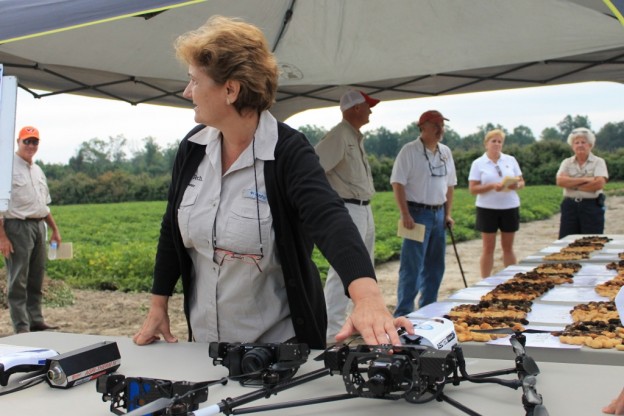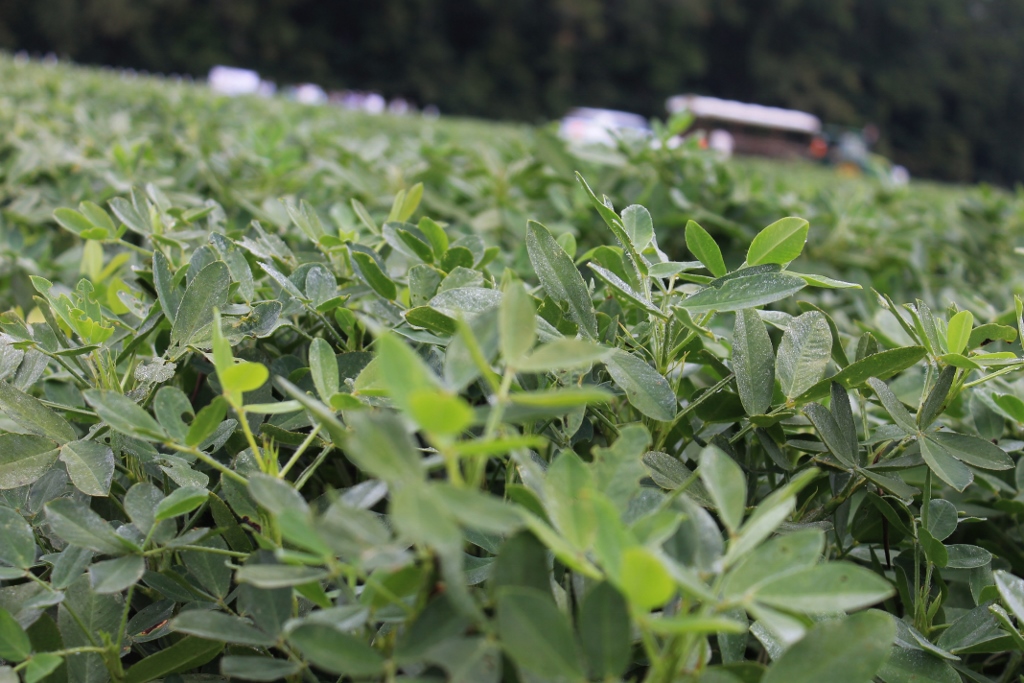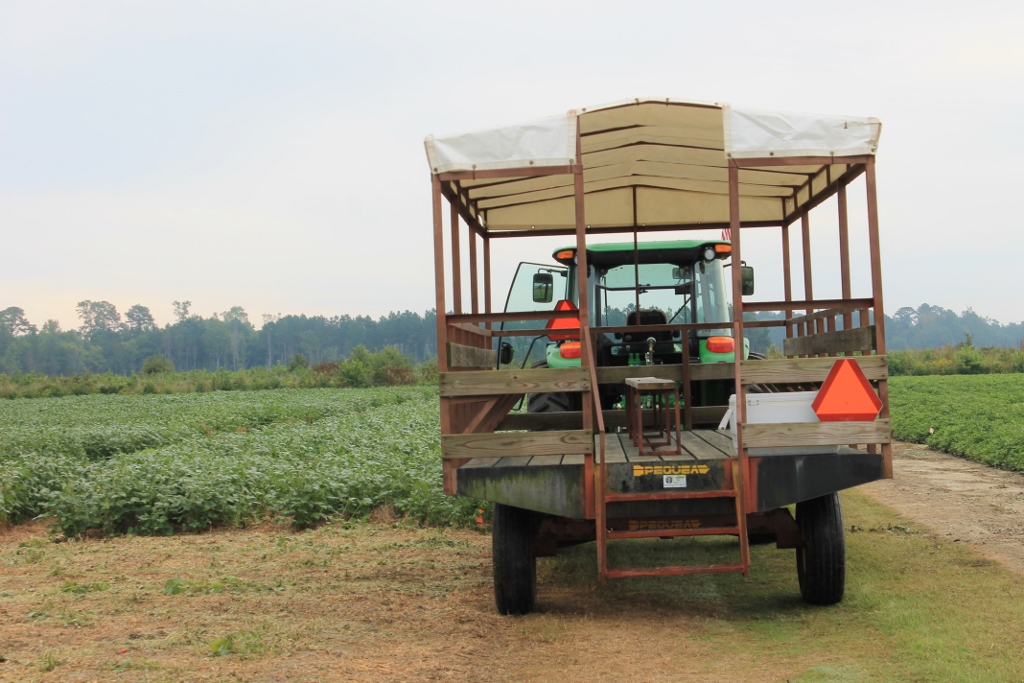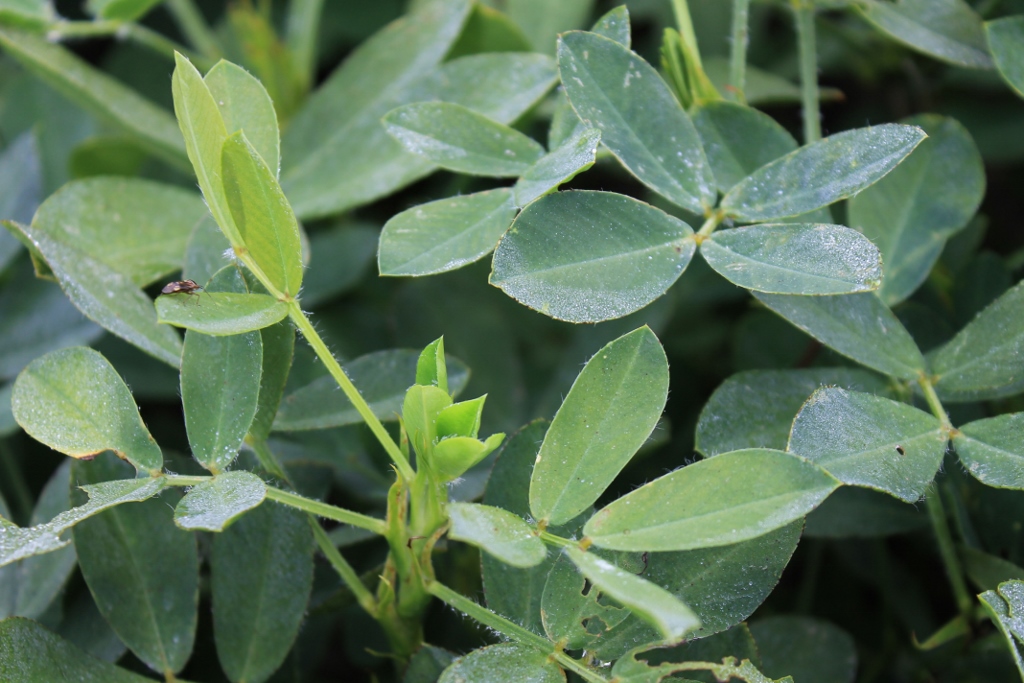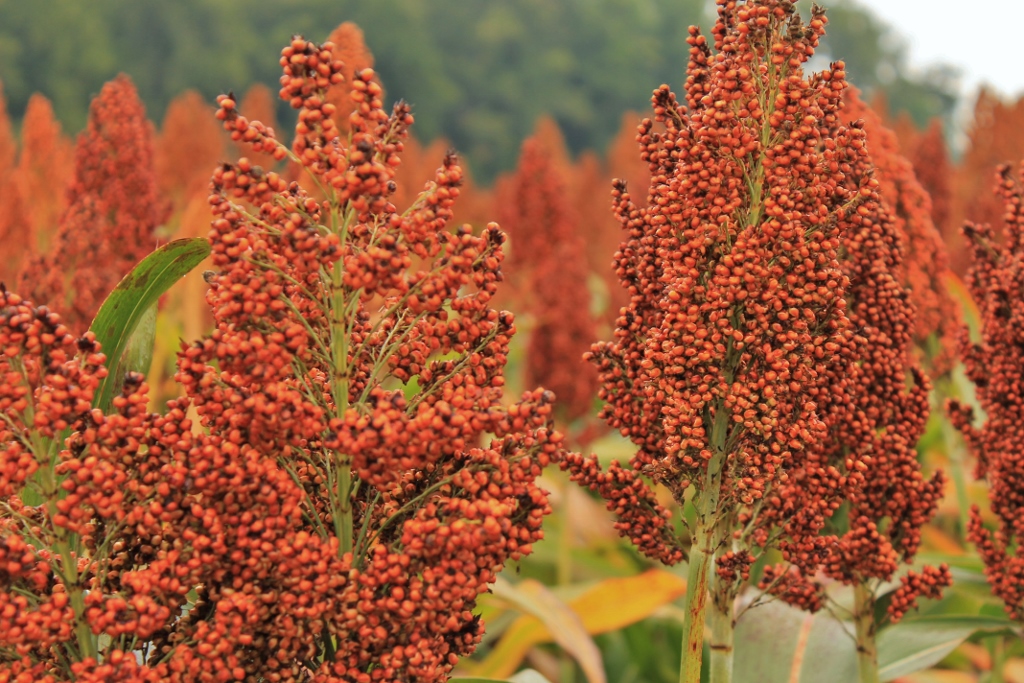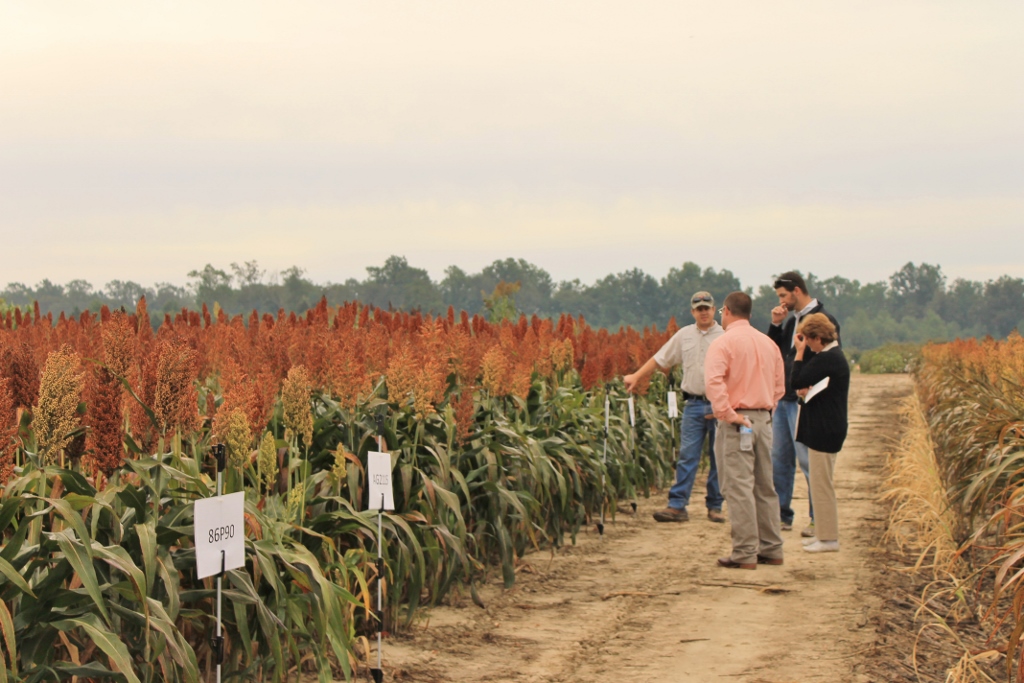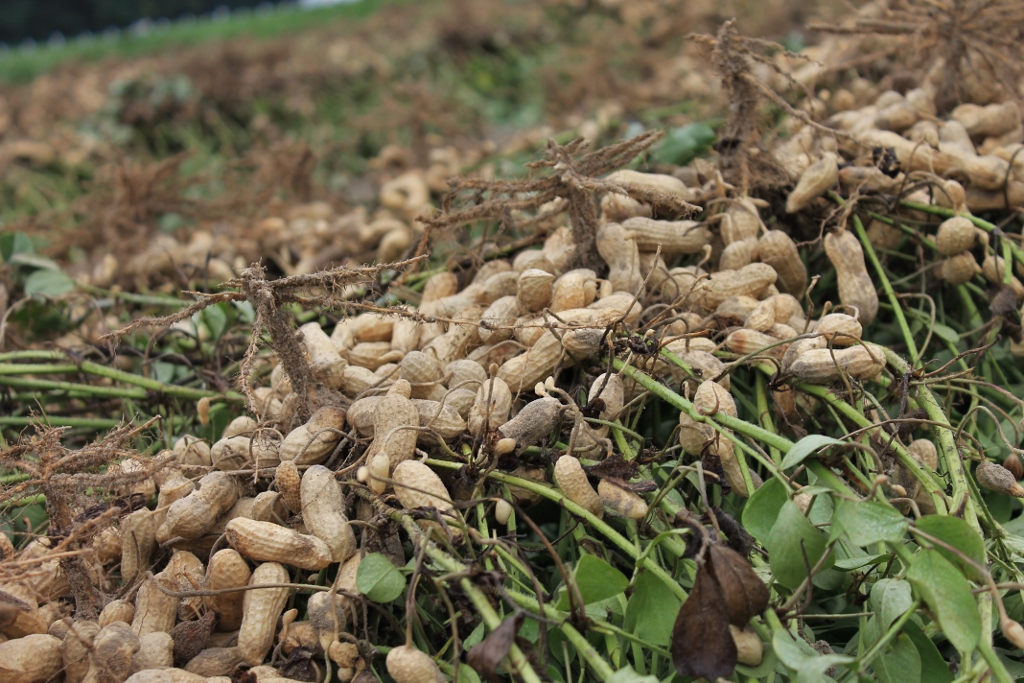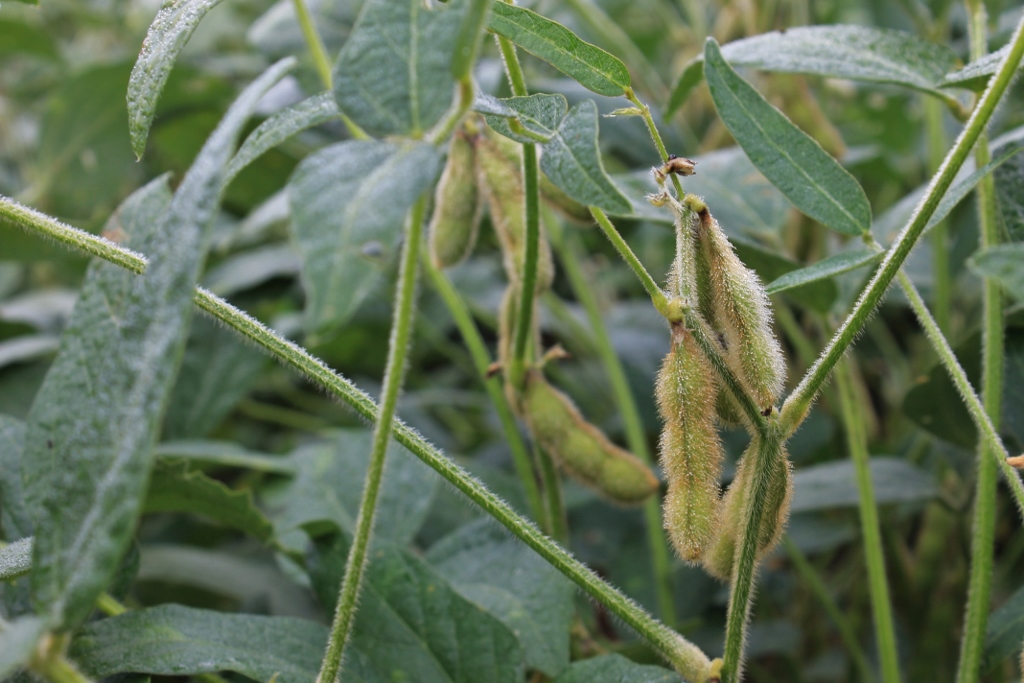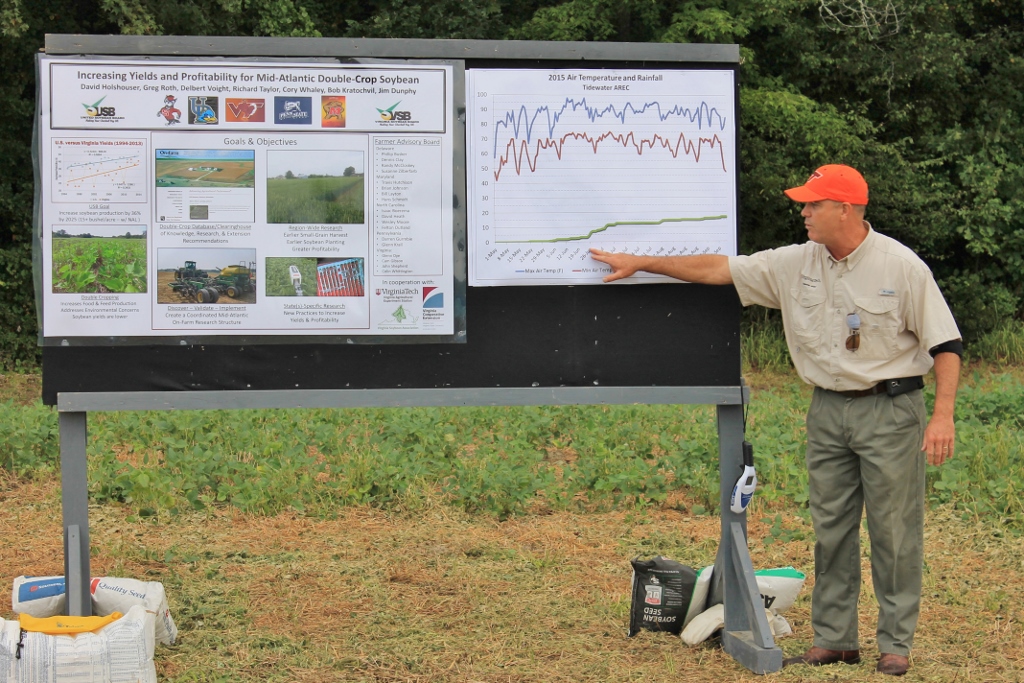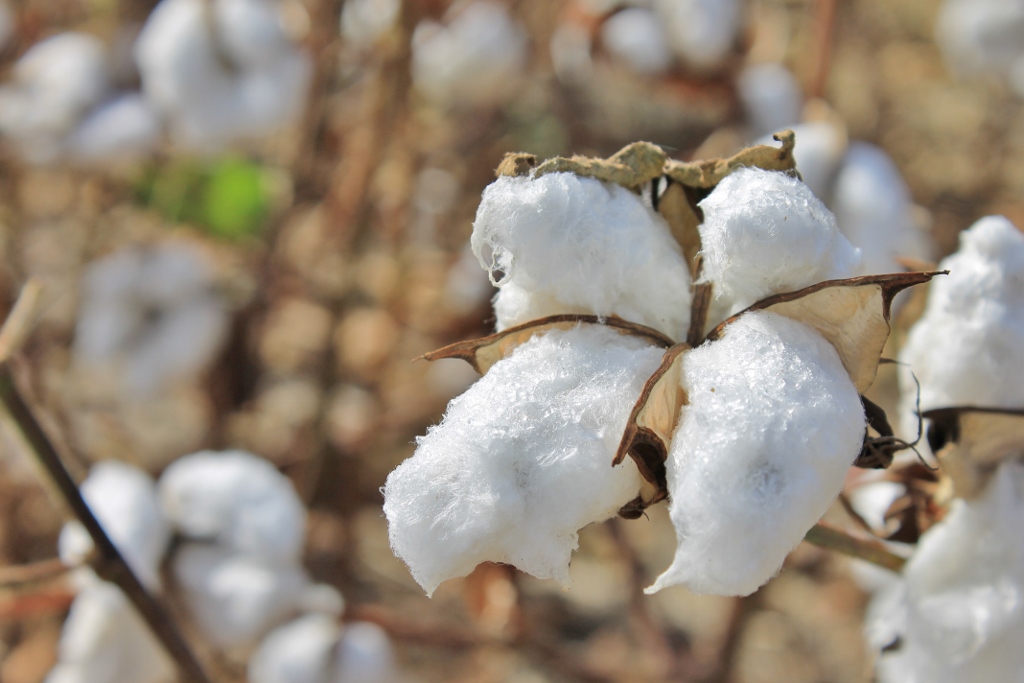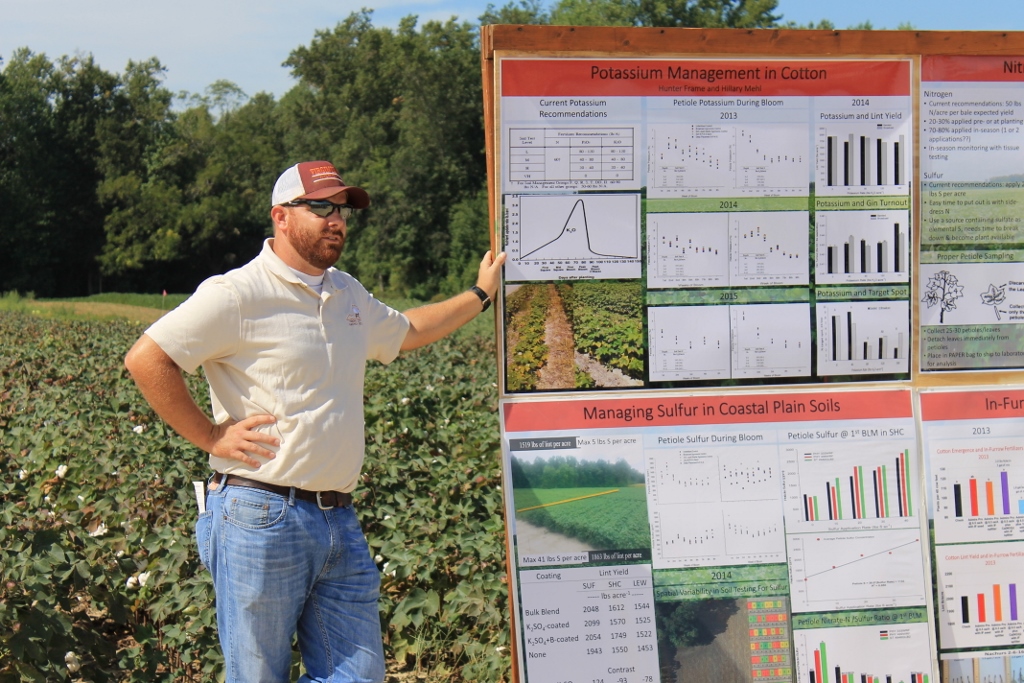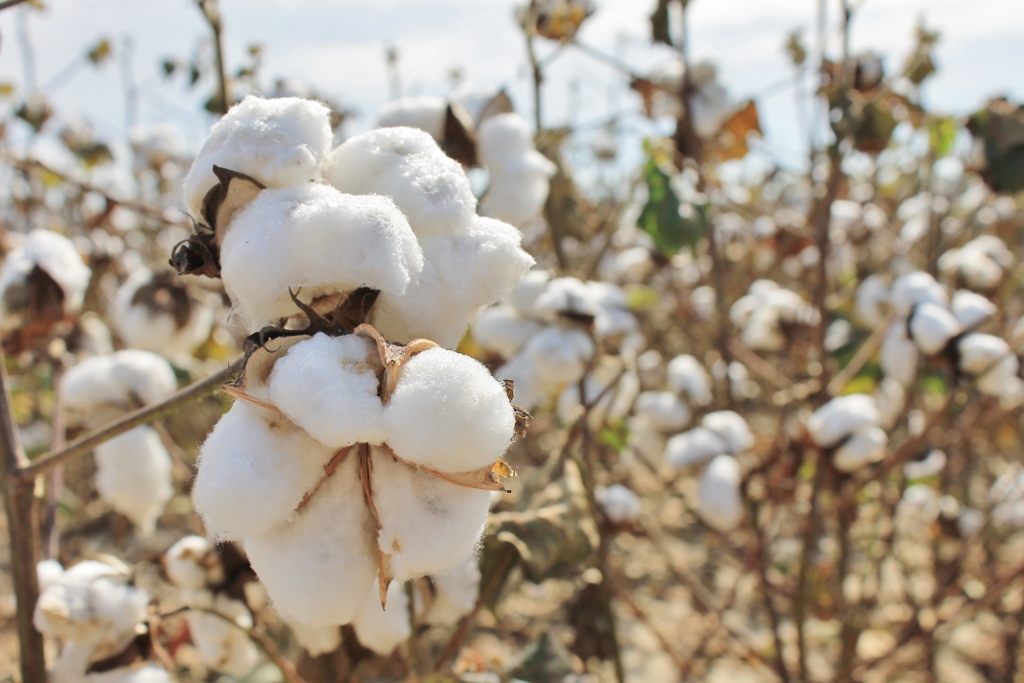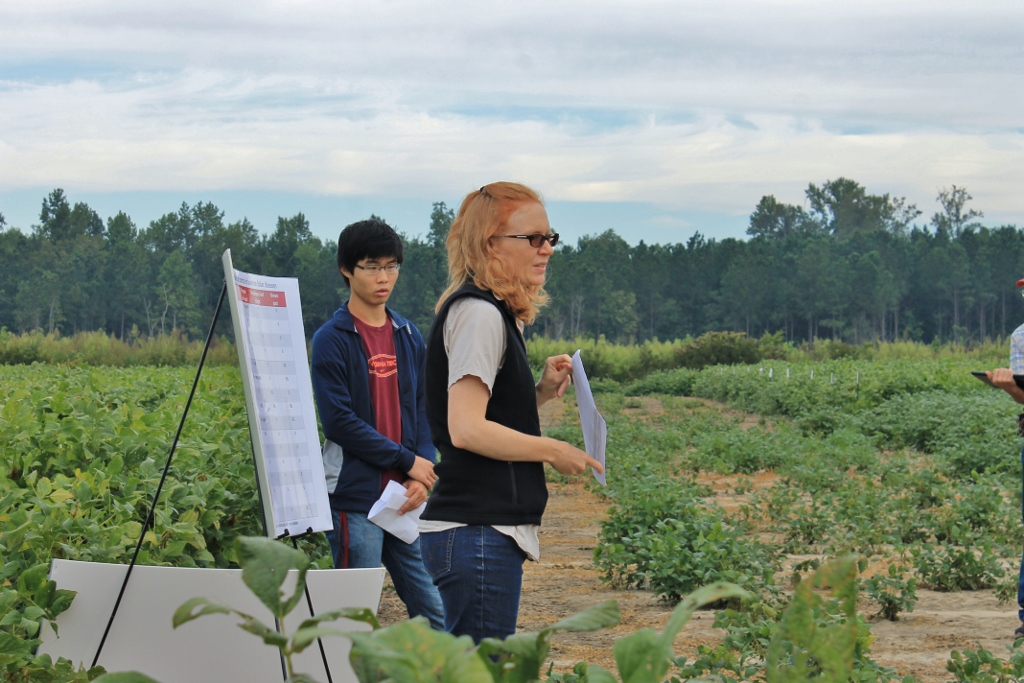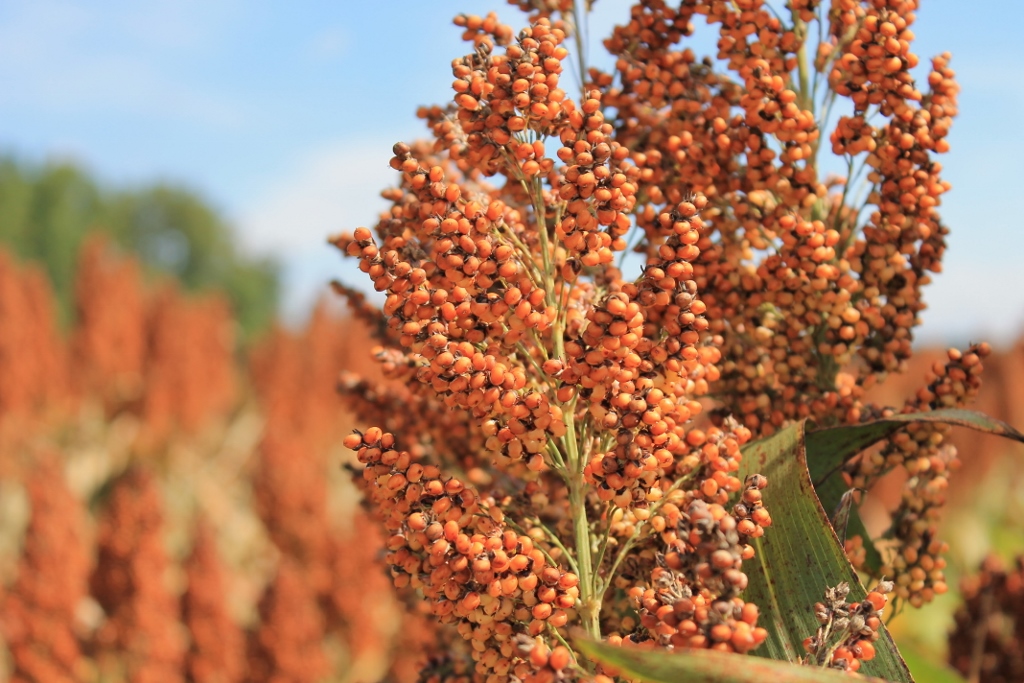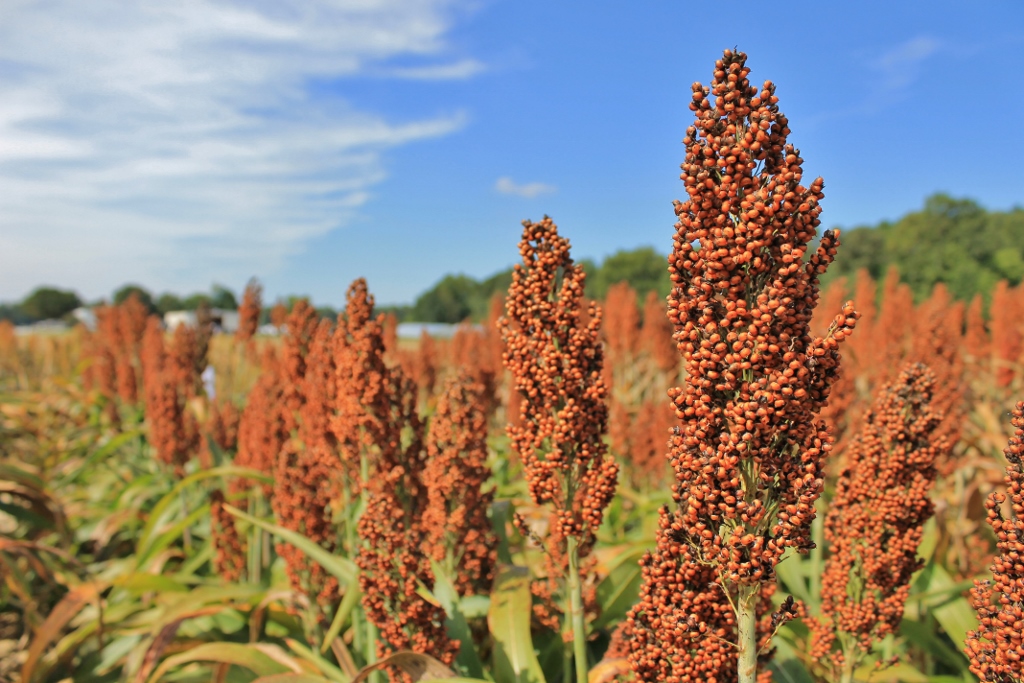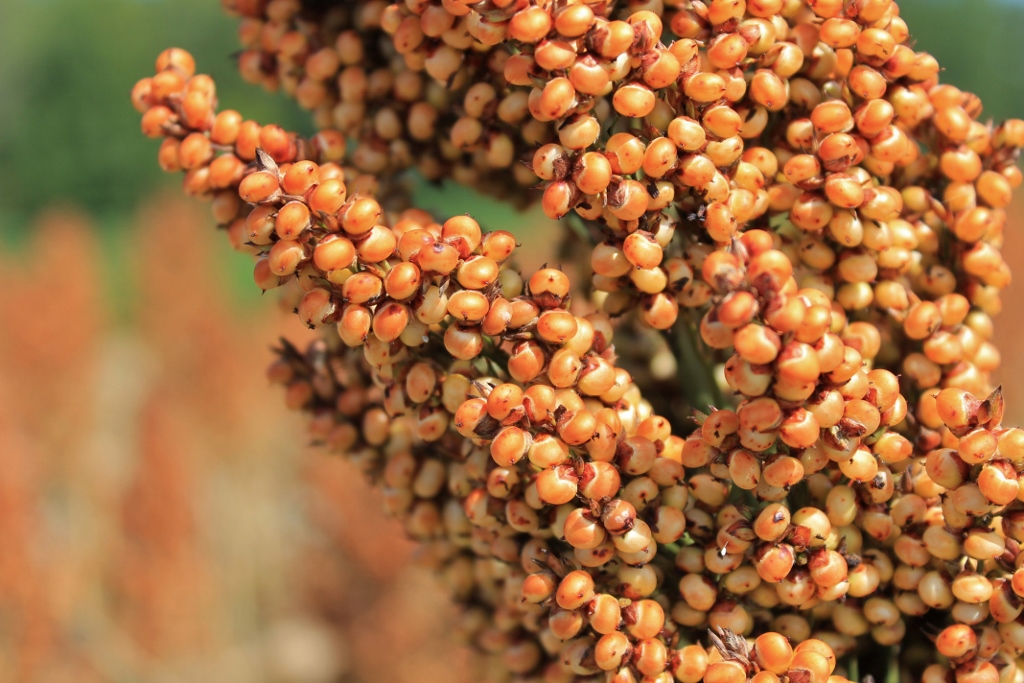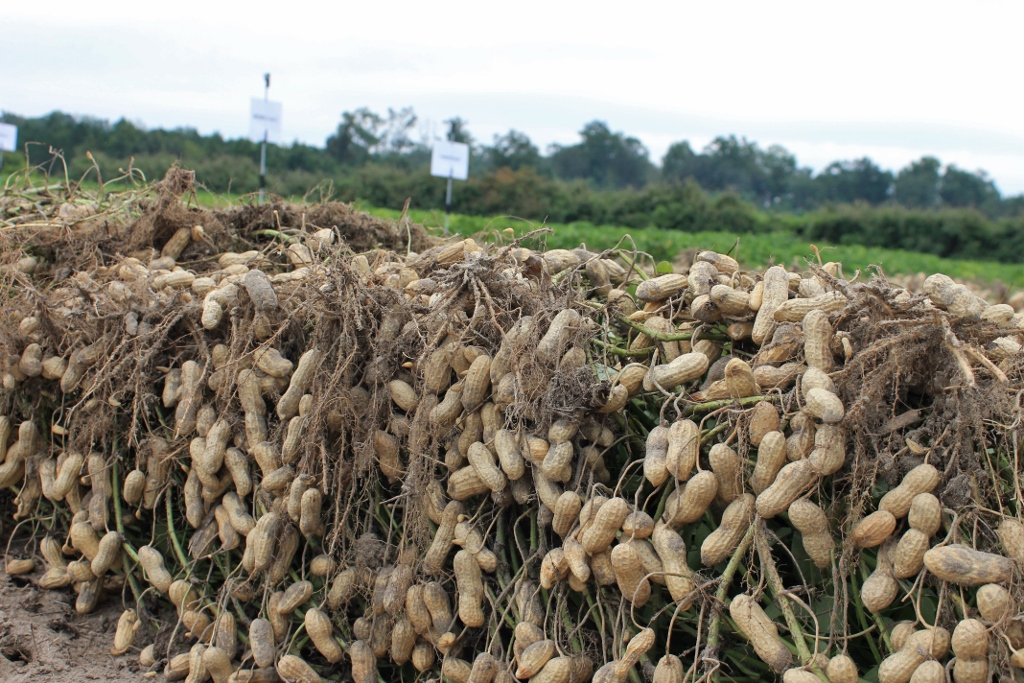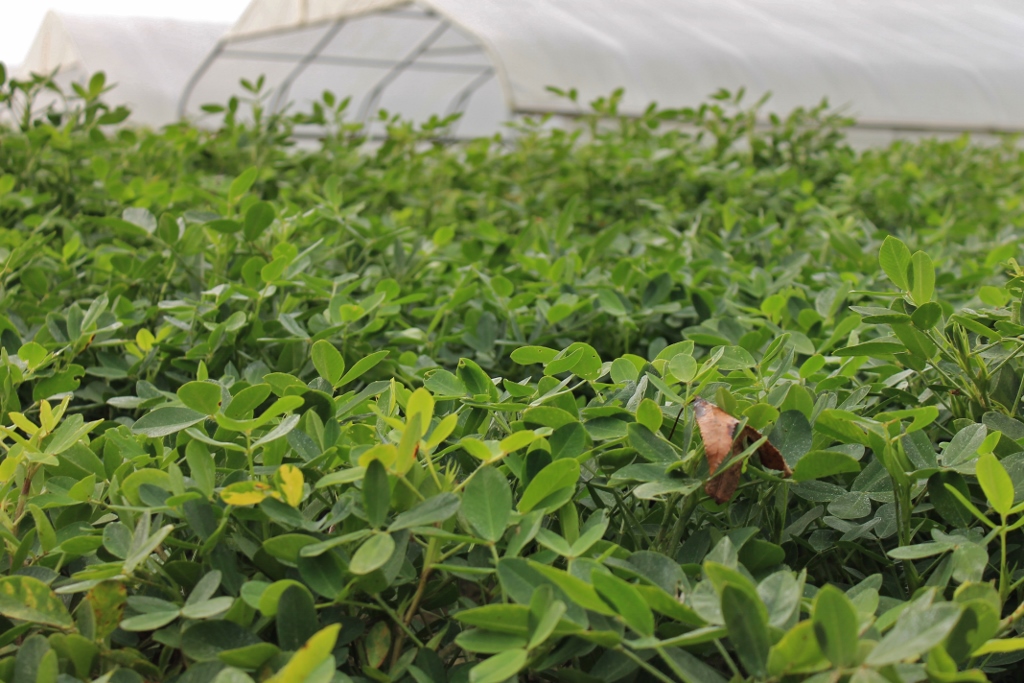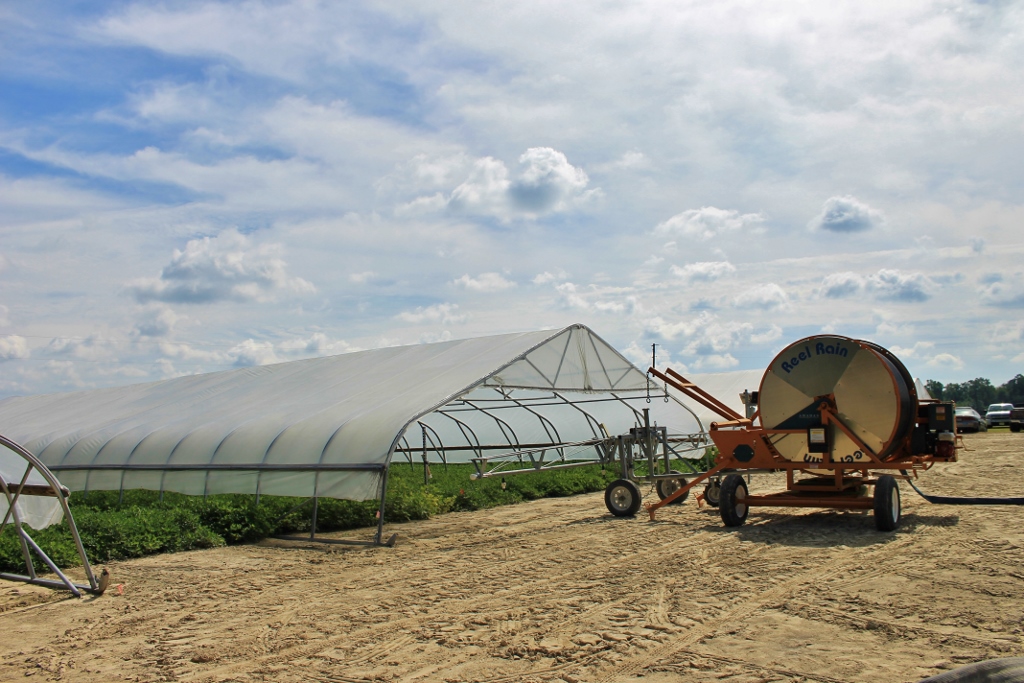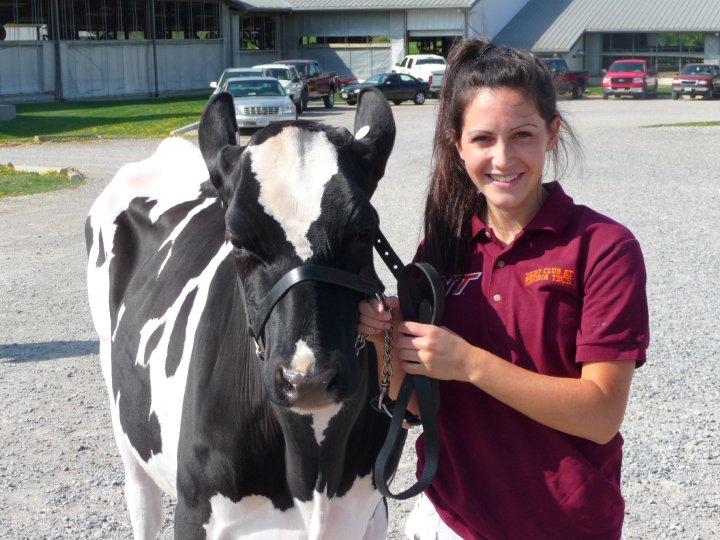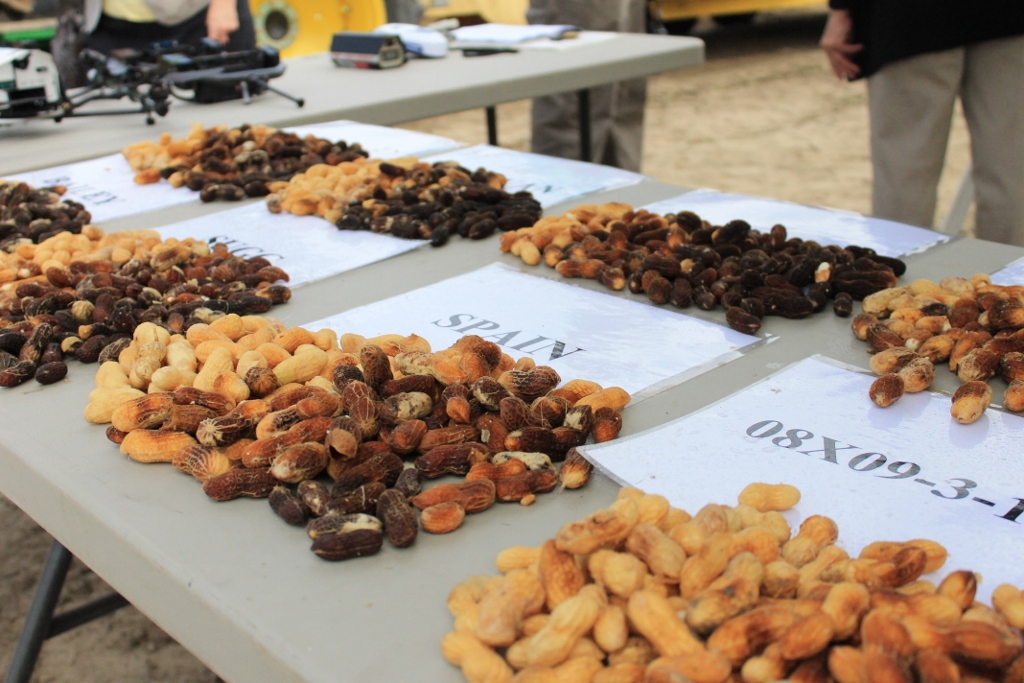
Top: Dr. Maria Balota discusses precision agriculture with visitors at a 2015 field day at the Tidewater AREC.
Nestled in southeastern Virginia, a hotbed of row crop production, the center serves as a vital link between university resources and the regional agricultural industry. Dubbed “TAREC” for short, the 412-acre facility is one of Virginia Tech’s eleven agricultural research and extension centers, or “ARECs,” situated around the state. Employing an in-house suite of specialists, each AREC hones in on work which improves regional agricultural production systems.
At its launch 102 years ago, the station was staffed by one person and a mule; as time passed, row crop production became its main priority. Today, in keeping with their mission to support local needs, the faculty and staff at TAREC carry out work related to soybean, peanut, cotton, grain, and swine production, focusing on agronomic challenges and pest management issues. “The Extension and outreach programs focus on making growers in the area successful. Success is measured through economic and environmental sustainability,” explains Dr. David Langston, the center’s director who also specializes in diagnosing diseases of vegetables and row crops.
Tidewater AREC is a facility where real-world questions prompt farm research and where specialists can deliver their findings directly and indirectly to the clients who need them most—Virginia’s agricultural producers. “Faculty are directly accessible to the local agriculture industry and many clientele just stop by with questions or issues,” says Dr. Langston. “Faculty participate in numerous grower meetings throughout Virgnia for each commodity each year…Regular field days are offered to the public to showcase individual faculty research programs,” he notes. Likewise, TAREC specialists can provide Extension agents—field faculty stationed in each county—with data to guide local educational programs.
To carry out a plethora of research projects and outreach programs, TAREC employs ten to fifteen summer student workers. The station also hosts about a dozen graduate students annually. “As you ride through the station mid-morning you will see people taking data, chopping weeds, or spraying plots with experimental treatments,” says Dr. Langston, describing a typical summer day when crop projects are in full swing and the station has a “full house.”
Though most of the research subjects at the station are plants, TAREC is home to a swine research program, directed under Dr. Mark Estienne. Dr. Estienne maintains a particular interest in reproductive physiology, addressing fertility issues in boars, management of replacement females, and, in his words, “increasing sow productivity and longevity by enhancing management, nutrition, and welfare.” In addition to his on-site research, he provides continuing education to the industry through outreach programs such as the Virginia Pork Industry Conference.
In light of trends favoring larger operations, his future work could influence the management practices applied to a considerable number of animals. “A vast majority of pork consumed in the U.S. will continue to be produced by large entities….During the past three decades, the Virginia and U.S. swine industries experienced major changes, including a decrease in the number of farms, an increase in the size of existing operations, and a move towards vertical integration,” he notes.
Dr. Estienne and his colleagues also have a hand in guiding emerging small-scale pork production systems. “There is an increasing number of small-scale and niche market farmers producing pork for consumers that prefer their meat to be from hogs raised locally in less-intensive systems…To serve a growing clientele, small-scale and niche market pork production bulletins addressing various topics are electronically mailed to over one hundred-fifty farmers every two months,” he says. To help these farmers engage with university findings, Dr. Estienne created the Small Scale and Niche Market Pork Production Conference, which draws nearly fifty people each year.
Outside of his research projects aimed at improving both commercial hog operations and small-scale producers. Dr. Estienne’s days are filled with conference planning, meeting preparation, meeting with his barn crew to supervise the care of swine at the facility, and fielding calls and emails from farmers.
The remaining researchers at TAREC fix their attention on crop production challenges. Dr. Maria Balota’s crop of choice is one of the region’s most legendary agricultural staples. “As a post-doc at Texas A&M University, I researched wheat, sorghum, and cowpea physiology. When I moved to Virginia Tech, however, I switched from cowpea to peanut!” she says. “My overall Extension goal is to maintain agricultural profitability through selection and use of the highest yielding and water-use-efficient varieties of peanut and sorghum.” Her time revolves around meetings with farmers, planning future research, developing proposals and publications, answering questions from the industry, organizing educational programs, advising graduate students, and managing the activities of the people employed under her research program.
Virginia peanut growers rely heavily on science-based recommendations to choose high-performing, marketable cultivars each year. In response to this ongoing need, Dr. Balota provides leadership for the multi-state Peanut Variety and Quality Evaluation (PVQE) program. “All Virginia-type peanut varieties that growers in Virginia, North Carolina, and South Carolina grow these days were released and made available to growers based on testing in my PVQE program,” she says. “Put simply, PVQE is the ‘pipeline’ for Virginia-type peanut cultivar development for the Virginia-Carolina region.” Peanuts generate $10 million in receipts in Virginia alone, so the forty-year-strong PVQE program has far-reaching influence on the agricultural economy.
Soybeans, the sixth-ranking commodity in the state at over $200 million in receipts, merit a research program of their own. Dr. David Holshouser provides his specialized knowledge to the industry, performing much of his test-plot work within the eastern half of the state, where considerable production occurs. Perhaps his most recognizable efforts are his Official Variety Trials in which he annually tests soybean varieties for performance and reports his findings to famers all over the state. “We work with seed companies and try to test as many varieties as possible, so soybean farmers will have the best information in selecting their varieties for the coming year,” he says. He also focuses on double-crop soybean production, a system which enables growers to produce a summer crop in the shortened growing window following small grain harvest in early summer. Although this production system brings challenges, Dr. Holshouser sees the value in exploring double-crop soybean work. “This system is environmentally-friendly, helps with the coming food shortage, and can be our most profitable system,” he explains.
Using the results of Dr. Holshouser’s studies, farmers can often implement new decisions on their own operations in the subsequent season. “Our research is very applied and can sometimes be taken directly from our plots to the farm. Other times, it may take a few years of research or on-farm validation to be confident that we are ready to suggest or recommend a new practice,” he says. Once his results are ready for dissemination, Dr. Holshouser speaks at thirty to fifty meetings per year. His workflow follows the seasonality of soybean production—fall is a particularly busy time since he must harvest his test plots and compile his results for presentations and publications. When spring rolls around, he turns his focus towards planting his full-season soybean trials in May, followed by the double-crop plots starting in June. “There is no typical day,” he says, “but that’s what makes what we do interesting and exciting.”
Dr. Holshouser is quick to point out that meaningful crop research takes teamwork. Agents and crop advisors serve as his eyes and ears in the field, he says, and he also collaborates with faculty from other states and farmers all over Virginia who willingly host his on-farm research test plots. He relies on his team at TAREC. “Good technical support is also critical to a successful Extension and research program. My technicians manage my research program. We also employ numerous graduate students and post-doctoral associates,” he adds. “They bring in new ideas and allow our program to progress. They provide expertise that is needed for innovation. Only with the assistance of good county agents, technical support, graduate students, and industry cooperation can we be effective Extension specialists,” he says.
Cotton is another crop of importance to the region. Virginia’s production region is limited to the southeastern counties, but cotton lint and cotton seed still combine to an annual value of about $83 million for the state. Dr. Hunter Frame supports the dozens of cotton growers in the region surrounding TAREC through his work on soil fertility and crop nutrition. Dr. Frame’s program focuses primarily on nitrogen, potassium, and sulfur management in cotton. Each year, he installs test plots and shares his findings at industry programs, workshops, and field days. His work provides growers with the information they need to make sound management decisions.
In addition to soil fertility and nutrient management research, Dr. Frame organizes the official cotton variety testing program for Virginia. The cost of cottonseed for producers is a major component of cotton production, and producers can lose hundreds of dollars per acre with improper variety selection. The testing program provides cotton farmers with performance data on current and future varieties, helping these producers achieve optimum yields. Dr. Frame also provides support, outreach, and research for agronomic issues affecting other crops grown in the region.
Crop disease troubleshooting is an important service at TAREC, where Dr. Hillary Mehl serves as the resident plant pathologist. Growers in the region often find disease problems which require prompt responses, so agents in the area consult with Dr. Mehl for assistance via the Plant Disease Clinic at TAREC. “Disease diagnostics is an important part of what I do since the best management approach cannot be implemented if the cause of the problem is not known…Based on my diagnoses, I provide management recommendations which frequently result in a grower not needing to apply a fungicide,” she says. “I think, or at least hope, one of the greatest impacts of my work is making and saving growers money. Not all diseases are best managed through chemical means, and research demonstrating the effectiveness of alternative or integrated approaches to disease management can result in recommendations that reduce input costs.”
Like the other specialists, Dr. Mehl carries out a research program which focuses on current needs. In response to growing concerns from growers, she recently increased her attention on nematode monitoring. For the past few years she has been working on the development of a weather-based fungicide decision aid for soybeans, and she also has worked on projects tackling fungicide resistance issues. Each year, she presents her findings at grower meetings, conferences, and field days.
“The ultimate goal of my work is to develop and implement integrated disease management tactics that minimize crop losses to pathogens in the most economical way possible,” she says. In some cases, this can be a formidable challenge. “Best approaches to managing diseases and nematodes are a moving target since there is such a high turnover rate in varieties and availability of pesticides, and the break-even point for pesticide applications changes as crop prices fluctuate. In addition, disease severity varies from year to year, and new disease problems are continuously emerging or re-emerging,” she notes. “As a result, my applied research program must remain dynamic and focus on meeting the needs of growers.”
The entomology program based out of TAREC creates guidance for a variety of crop producers affected by insect problems. Dr. Ames Herbert retired in 2016 after serving the industry out of the center since 1988. Under the direction his replacement, Dr. Sally Taylor, the entomology program will continue to develop economic thresholds, management tactics, and control recommendations for a number of major pests affecting row crops. Farmers, agents, and crop advisors all over the state currently use the guidelines from this research program to determine whether or not an insect treatment is a good decision. “This program provides growers, crop advisors, Virginia Cooperative Extension ag agents, and the industry with the ‘tools’ needed to manage insects with the most efficient, effective, and least-cost practices,” Dr. Herbert says, “These ‘tools’ have included several pest management guides, color image identification guides, and risk advisories. Each tool has required research in the laboratory, on the Virginia Tech research farms, and on growers’ fields across the state.” Dr. Herbert notes that these efforts are possible with support from graduate students and collaborators from other land-grant universities.
Dr. Taylor and her colleagues will continue Dr. Herbert’s work monitoring and researching insect issues around the state. When insect pests pose an immediate threat, faculty can share alerts on the Virginia Ag Crop and Advisory Blog, a tool that Dr. Herbert created. Dr. Taylor brings to the program her strong background and expertise in investigating insect pest ecology and management. Dr. Taylor’s program will focus in part on monitoring for, and developing plans to mitigate, insect resistance to insecticides and GM crops. “One goal of our program will be preserving the usefulness of our current and future insect control tools. Field crops are vital to Virginia’s economy and represent a dominant use of arable land across the state,” Dr. Taylor says. “Utilizing integrated insect management guidelines benefits everyone: it is economical for our growers and reduces environmental inputs. Resistance, or the ability of insect to survive insecticides, can threaten the profitability of growers and increase insecticide use. Our program will focus on bringing useful, science-based information to our producers with the long-term goal of increasing sustainability.”
Dr. Taylor adds that she is excited to be joining the talented team of scientists at the TAREC and looks forward to working closely with Virginia’s agricultural producers. “Collaborating and solving pest management issues with growers is the most enjoyable and rewarding part of my job,” she says.
At the Tidewater AREC in Suffolk, the specialist mission reaches far beyond simple research and education. “You can sum up what I do in four words: Learn, Discover, Teach, and Serve. For that matter, you can sum up what we do at the TAREC in those four words,” says Dr. Holshouser. “First, we continuously learn through communication, reading, study, and reviewing—this includes research journals, Extension publications, and popular press. Furthermore, we learn by observing and listening to issues and concerns that our farmers, Extension agents, and crop advisors are facing,” he notes. “We discover by researching relevant issues and problems, and from this research, we develop effective production practices and cropping systems. We teach by extending our knowledge and understanding to various clientele. And finally, and most importantly, we serve by guiding the implementation of improved production practices through education and demonstration, so to change behavior that leads to profitable and environmentally-responsible agriculture.”
Agriculture in Virginia is a fluid industry, shaped constantly by changes in commodity markets, economic trends, trade and export markets, consumer demand, local infrastructure, environmental conditions, improved technologies, and dozens of other variables. “Row crop agriculture is constantly changing in the region, as peanuts used to be the main crop twenty to thirty years ago. Cotton and soybeans have since become the major row crops,” says Dr. Langston. “The faculty work hard to stay ahead of the commodity shifts to supply current and relevant information,” he says. He sees the work at Tidewater AREC adapting to these forces as they steer the industry forward. As for testing out new and exciting precision agriculture technologies at TAREC, things are looking up—literally. Says Dr. Langston, “We are beginning to get more into UAV applications, so it may become commonplace to see drones flying around.”
Additional Resources for Readers:
TAREC homepage and Facebook page
Virginia Tech Agricultural Research and Extension Centers

